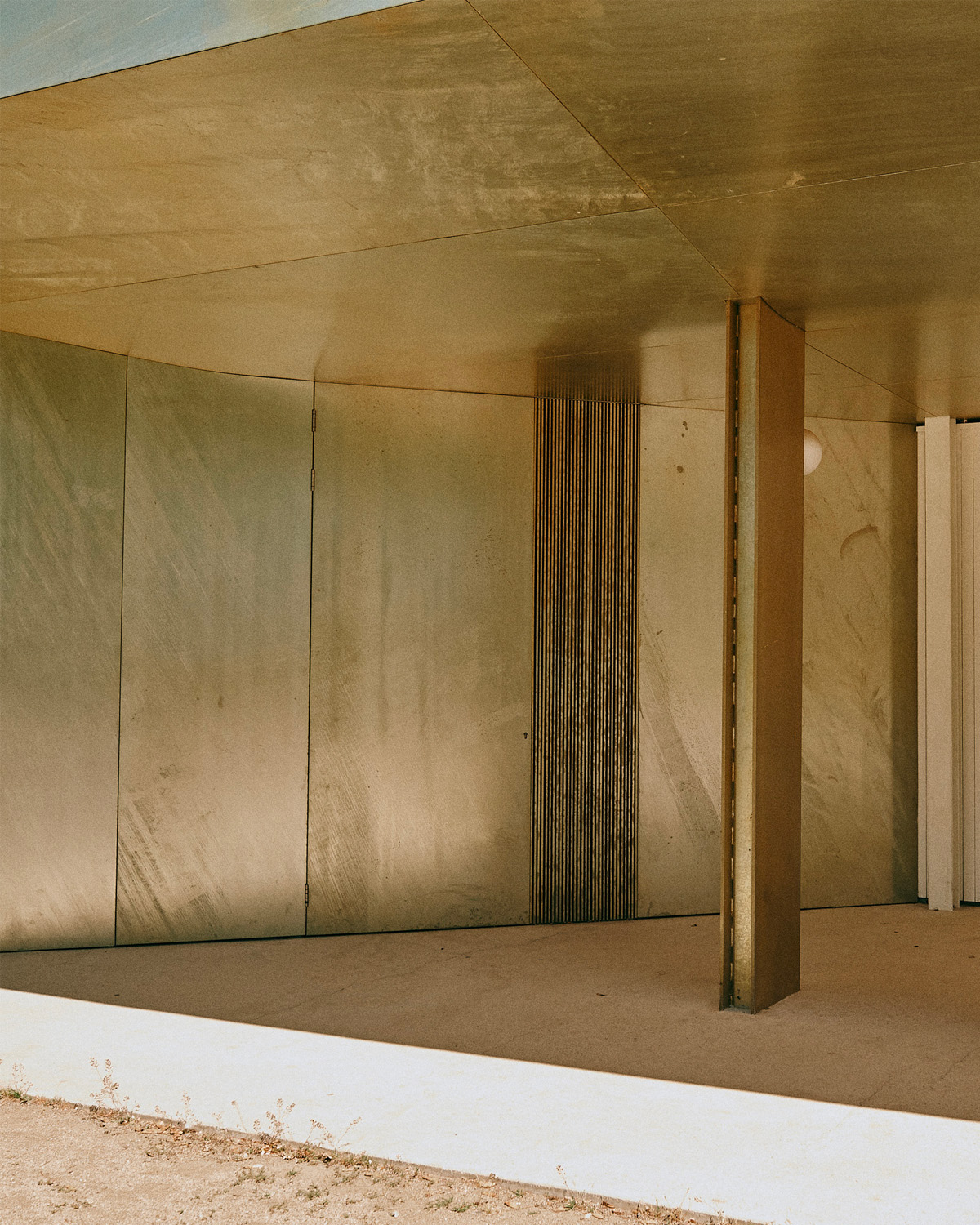Barcelona, todo cambia.
The air belongs to the city, and also to the sea. The streets are empty, walking alone, towards what? Nobody knows, maybe a café, a square, a beach captured in its most beautiful hour, with long shadows and disheveled beach chairs, leaving footprints on the sand.
But there are no footprints on the asphalt roads just behind, where concrete took over Poble Nou and now returns to the sea. The industrial area speaks to the horizon, and the fracture is interrupted, the wound healed. Everything is in motion. Everything changes, todo cambia, as someone sang.
Barcelona is always something different, a different home. It truly was Cecilia’s home many years ago. A place of study, studying what architecture is, what landscape is, above all, what makes us human. And yet, it always integrates with the urban, finds new relationships, new forms of possible dialogue.
Now, even just for a moment, it’s the home of Palorosa and its colors. They seem to have been born here. Who came first, the ochre of those bags or the yellow of that chair, the turquoise of the tiles or the one in the basket that perhaps holds distant and yet present memories?
Barcelona, forever different, forever something else. The city of mass tourists, of electronic fanatics during summer festivals, and then suddenly, it becomes empty, deserted. It’s the outpost that resists, with open windows because it’s siesta time, even though we are millions, even though we are always on the move. It’s the place for solitary walks, where you only hear the sound of your own footsteps, among square blocks that transform from factories into places where new ideas and projects take residence, and where even some passing nomads find refuge.
Everything is the opposite of everything. Barcelona – whether you return for two days, two months, or a new life – becomes an almost imaginary backdrop where Barcelona itself can even disappear. The wild extravagance of Gaudí vanishes, the crowd vanishes, the rush hour traffic between the buildings and the sea disappears, along with the usual tours with their familiar stops. At most, there remains a visit to a local bar for a bombeta. How could you even remove that?
What defines a city? Its architecture? Its people? Its flavors? Its colors? The colors of Barcelona – of this different Barcelona, because it’s still there but increasingly feels like elsewhere – form a tonal range of blues, yellows, and pinks, interrupted by lines and geometries, in horizontal and vertical arrangements. Anything goes. And there’s the white of the friezes on the buildings, and the color of sunlight when it becomes too intense.
What is a city made of? Its material? (Someone once wrote, dreams are made of matter, but also places, and perhaps even time.) So, if that’s the case, Barcelona is made of ceramics and metal, glass and mosaic, but it’s also the sum of all its elements, the fullness of the urban and the void of nature.
Perhaps, while we’re here, we’re only chasing ourselves. It’s a circular race, walking in search of something that is present even in its absence. We seek the sea when we find ourselves in narrow alleys, we aim for the shade of the peripheral Ramblas when Barceloneta burns.
The sea may be far, but there’s always that wind to remind you it’s just around the corner. You have the sea in front of you, and as soon as you turn, there’s a building with tiles matching the sky, telling you to go back inside, into the life of the city that never abandons you. Never.
Shadows grow longer along the waterfront, one last look at the waves before evening arrives. From the Marina with its blue Olympic villas, we venture further inside, with roses entwined on the sidewalks. And then, the old houses of Poble Nou, old even though they are from the 19th century, but here, they seem ancient, far from the Gothic frills of the dark center. It’s the fishing village that reveals itself as a metropolis, just as this city keeps rediscovering itself, tropical and Mediterranean, European and global, small and overflowing.
We’re inside, but the sea is not far. There’s an available table in that corner, near the wall with pink and blue tiles. Look how well my bag fits there, and as you think about it, you smile. Wait, let me take a photo. I need to create new memories for this new city. It’s the same home, but it’s something else.
Text by Mattia Carzaniga
Images by Simone Rivi
Discover more about the editorial Project Summer 2023 set in Barcelona













